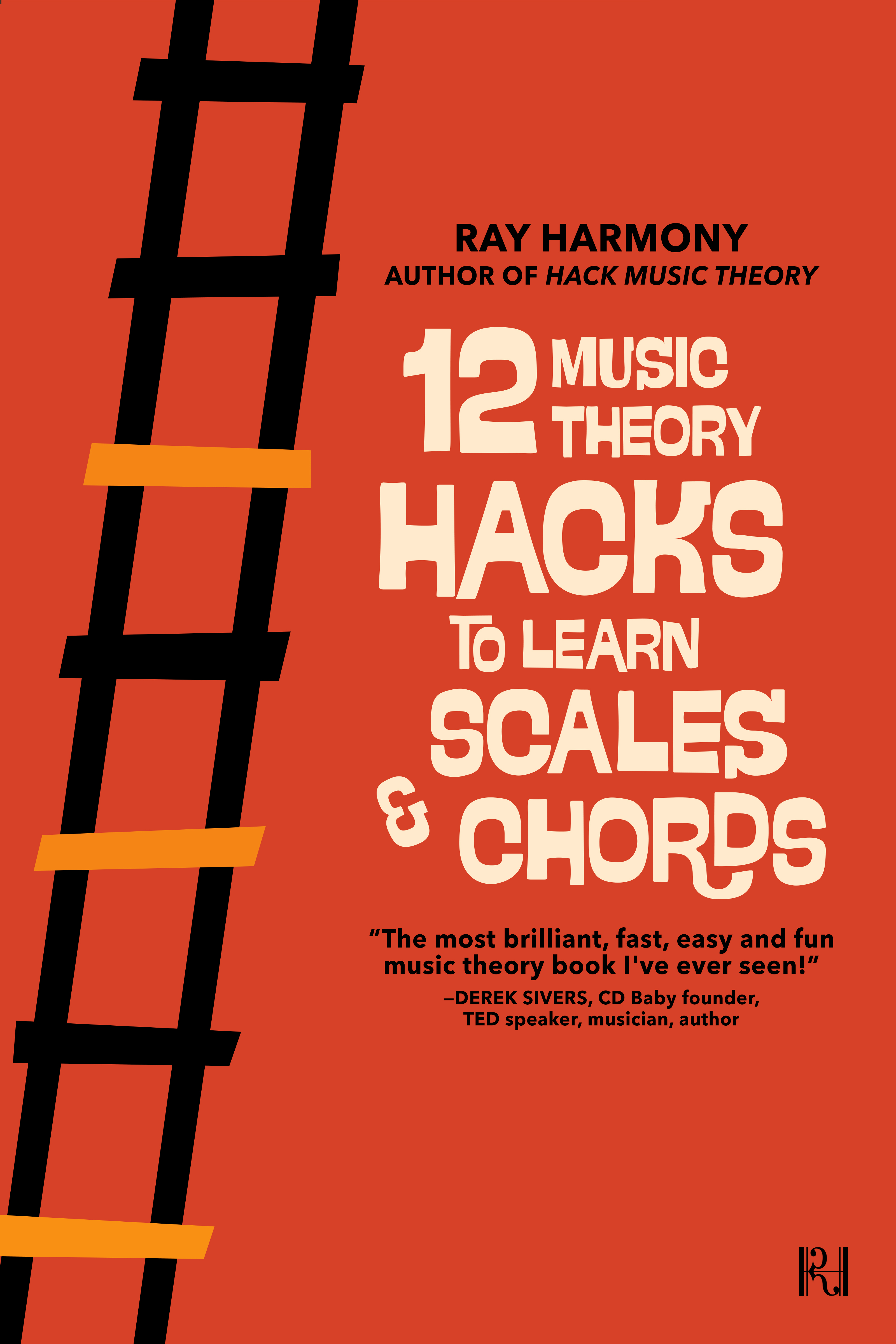Today on 3-Minute Theory: How to bring your chord progressions to life!
We’re still in D Dorian, and using the white-note hack, we previously wrote this chord progression: Dm → Am → Em → Gmaj. As you can see, we’ve also previously re-arranged some notes to make the chord changes nice and smooth (for more on these hacks, please watch/read How to Make a Chord Progression Flow Like a Pro). So, we’ve got our common notes in the same place within the chords as they change; everything is looking and sounding good. But, why does this chord progression still feel a bit lifeless? No problem, I’ve got four amazing hacks for you, which are going to bring all your chord progressions to life! Figure 1: Well-written progression with rearranged notes to make chords flow, but still feels a bit lifeless
Figure 1: Well-written progression with rearranged notes to make chords flow, but still feels a bit lifeless
Hack 1: Change where the chords change
The first thing I want you to do, is put your MIDI grid into eighth notes (1/8). Now, play around with where the chords come in, because when chords change right on the beat exactly where you expect, it’s dull and boring. So, we’re going to move the Am to make it start earlier, and we’re going to do the same again in the second bar with the Gmaj. This results in the Dm being a bit shorter, the Am a bit longer, the Em a bit shorter, and the Gmaj a bit longer. Listen to how cool this already sounds, at 1:26 in the video/podcast. Figure 2: The Am and Gmaj chords start earlier
Figure 2: The Am and Gmaj chords start earlier
Hack 2: Split some chords
Wherever you have a longer chord, like we do with Am, split it up, just chop that MIDI! This is the virtual equivalent of playing a real piano and hitting the same chord again. In this example, we’re gonna hit that Am three times: one long then two short. This gives us a rhythmic propulsion through those longer chords, which could otherwise be boring. We’ve got another long chord at the end, the Gmaj, so we’re gonna slice that one up too, giving us an extra hit on it. Listen to the huge difference this makes, at 2:07 in the video/podcast. Figure 3: Longer chords (i.e. Am and Gmaj) split up to give rhythmic propulsion
Figure 3: Longer chords (i.e. Am and Gmaj) split up to give rhythmic propulsion
Hack 3: Create movement where there is none
Now, wherever you have three or more hits on the same chord, rearrange the notes in the middle hit/hits. You can see our Am has three hits, so we can rearrange the notes of that middle hit. Let’s throw the bottom C up an octave. This hack will never affect the change into the chord, or the change out of the chord. All the common notes are still in the same place when the chords change, we’re just having a bit of fun within the longer chord itself. This creates movement where there is no movement, and that’s a really cool hack for injecting life into a longer chord. Listen to how that potentially boring longer chord (i.e. Am) has now been transformed into an awesome feature, at 3:02 in the video/podcast. Figure 4: Rearranged notes of middle hit in longer chord (i.e. Am)
Figure 4: Rearranged notes of middle hit in longer chord (i.e. Am)
Hack 4: Add phrasing
The last hack is super quick and easy, we’re just going to add some phrasing. Phrasing is where the music breathes. The obvious place to add a phrase in this example is at the end, so I’m just going to pull in that Gmaj to leave a little space before we loop around to the beginning. The other great trick with phrasing is to put your MIDI grid into sixteenth notes (1/16), which gives you even more interesting options. I’m hearing those two short Am hits being even shorter and super punchy, so I’m going to shorten them both to sixteenth notes. This leaves a couple of rests (AKA musical breaths) in between them, and totally brings that little bit to life. And with that, we’re done, check out the final version at 3:37 in the video/podcast. It’s alive! Figure 5: Short hits on Am are further shortened, and Gmaj is also shortened to create a rest before looping
Figure 5: Short hits on Am are further shortened, and Gmaj is also shortened to create a rest before looping
If you want to go deeper into writing more advanced chord progressions using the modes, please check out my Hack Music Theory for Songwriting & Producing PDF. Until next time, happy songwriting!
Ray Harmony
Music Teacher
Victoria BC, Canada
 | |
Wooohooo!!! You're a mere 30 minutes away from being even smarter than you already are. Just head over to your inbox now for your free download.
